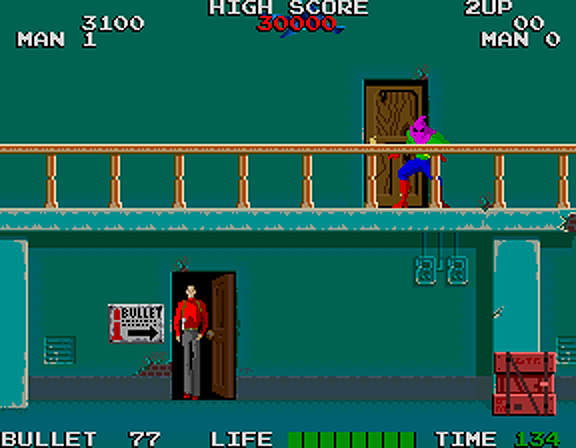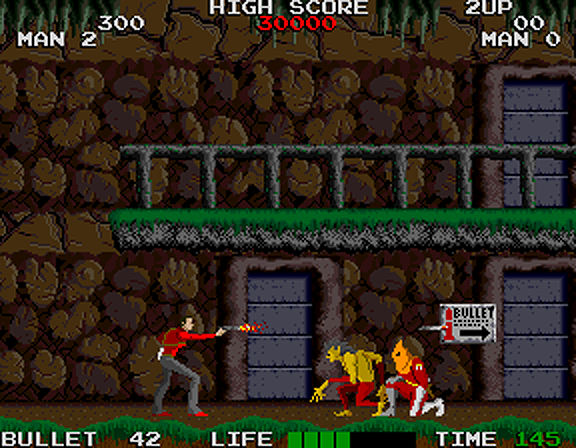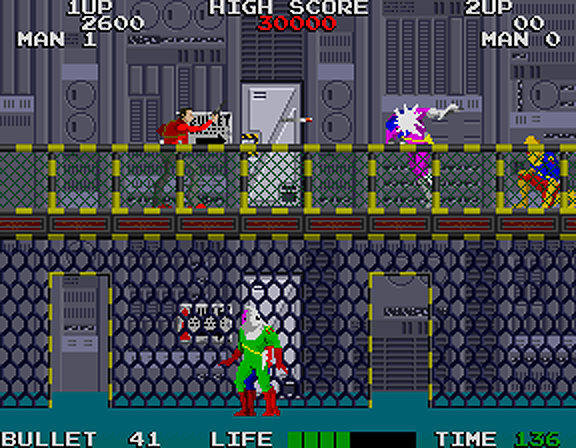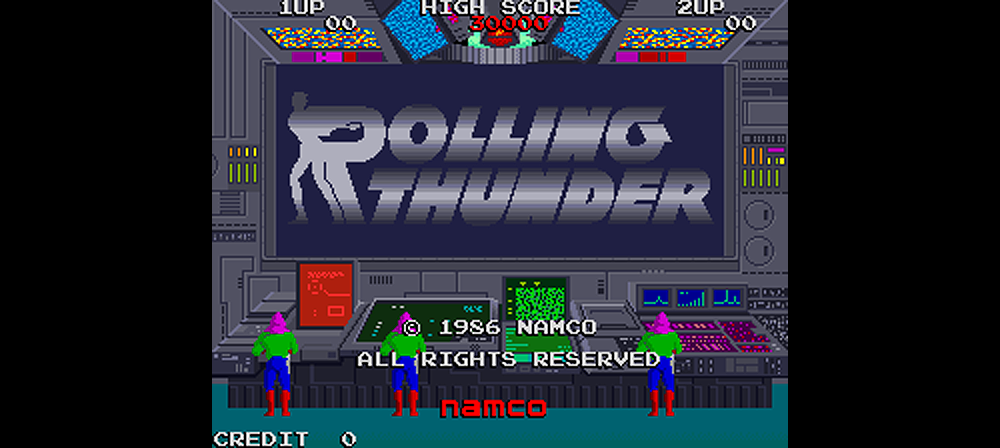Rolling Thunder was an arcade game released by Namco in 1986. It was considered a commercial success, frequently found in arcades across North America. The cover/shoot and split-level gameplay heavily influenced the design of the original Shinobi, developed by SEGA in 1987. Rolling Thunder would go on to be released on multiple home gaming systems, including the NES in 1989.
In Rolling Thunder the player is tasked with saving a female spy operative who was captured by a sinister organization. The hero must jump and shoot his way through an army of enemies to complete the mission. There are only two weapons at the player’s disposal, a regular pistol and a faster firing machine gun. While the arcade gameplay is relatively simple, there are a few things about Rolling Thunder that made it a truly unique arcade experience.
Rolling Thunder was the first video game to introduce the cover/shooting mechanic. The player (and enemies) can duck behind crates and other objects in the game world. Stepping inside doors will also provide temporary relief from opposing gunfire. Rolling Thunder has no shortage of enemies, so taking cover is a must if you want to stay alive. This game doesn’t apologize for being brutally difficult, but the ability to lay low definitely helps to slow things down. The cover/shooting aspect was groundbreaking and made this forgotten gem an important part of video game history.

First thing you might notice while playing Rolling Thunder is that there are a lot of doors. Seriously. There are doors everywhere. While some doors provide cover for the player, others serve an equally important role. Ammo (for both guns) can be found inside of appropriately marked doors. When the player steps inside, the ammo count ratchets up. After a brief cooldown the player will exit. This is an interesting game mechanic because it serves two purposes. The player not only picks up ammo in a unique way, but they also get a short break in the action. It seems subtle but it affects the overall pacing of the game.

We couldn’t talk about Rolling Thunder without mentioning the innovative level design. The player has the ability to jump up and drop down between two levels (ground and upper platform) throughout most of the game. This allows the player to avoid and ambush enemies as they spawn from every direction. Moving between the two levels can be definitely be perilous. Jumping up and dropping down requires excellent timing to avoid bullets. But over time the mechanic becomes second nature to the player and a vital part of the overall gameplay.

Rolling Thunder is one of the most underrated games of all-time. The cover/shoot, door and split-level game mechanics were a digital breath of fresh air. Toss in relentless enemy delivery and you have an arcade experience like no other. While Rolling Thunder may be a distant memory in the minds of many players, its impact on the video game industry will never be forgotten.
Hopefully you enjoyed our latest blog post. Let us know if you have any questions or comments. Sign up to our email list (below) for future updates. Thanks for reading!
Be sure to check out our latest game Martian Law on Steam (PC).

